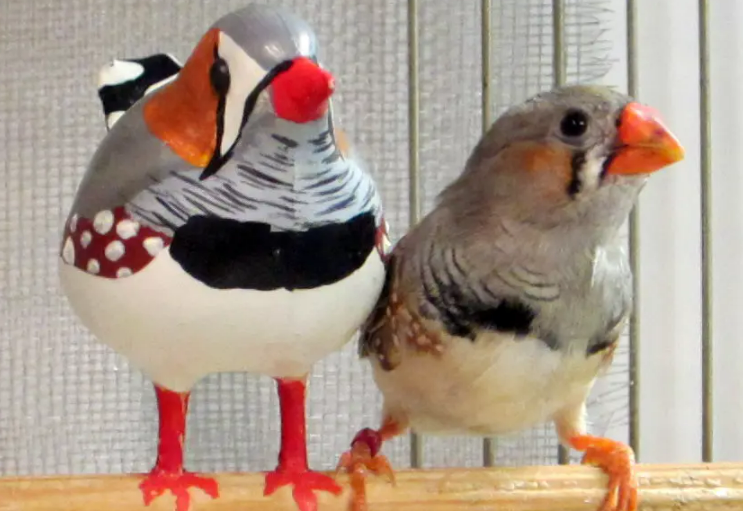我们通过发表论文来表彰学生 STEM 写作比赛的前 11 名获奖者。这是沈凯莉写的。

。。。伊娃·柳比西奇
这篇文章由Kelly Shen撰写,16岁,来自加利福尼亚州阿瑟顿的阿瑟顿圣心学校。,是学习网络第二届年度STEM写作比赛的前11名获奖者之一,我们收到了3,741份参赛作品。
From Babbling to Birdsong: What Finches Can Teach Us About Vocal Learning
Imagine listening to Puccini’s “O Mio Babbino Caro,” as performed by a two-month-old baby, or Bizet’s “Habanera” crooned by a toddler. In some sense, that is what you hear when a baby finch practices its singing. Recently, scientists have studied how juvenile finches learn their songs, and their findings could teach us a thing or two about the way our own learning works.
Learning to speak is very much like learning to play a violin or a piano. It involves properly controlling the complex muscles that enable speech. In fact, humans and birds share a similar process. Just as a baby learns to say “Mama” or “Dada” by mirroring their parents’ baby talk, juvenile songbirds reproduce their parents’ song — but it’s more like a skipping CD stringing together single notes instead of the full track. Humans and songbirds are more impressionable when they’re young, and their neuroplasticity decreases in transition from adolescence to adulthood. Observing this change in birds could help scientists develop treatments for strokes and other conditions that affect speech and movement.
Michael Brainard, a professor of physiology and psychiatry at the University of California San Francisco, conducted experiments on juvenile Bengalese finches to explore the neurological circuitry behind vocal learning. By observing the finches learning songs from computerized teachers, he was able to stitch together the neural networks that coordinate cognitive and motor control during singing. He discovered that suppressing a region of the brain responsible for motor control, known as the basal ganglia, made the juvenile finches sing a duller tune, as if the glissandos and fortissimos had been taken out of the score. At the same time, variations in pitch were subdued, making the song more monotone. “It looks like this part of the brain is introducing variability — constantly doing things a little differently and then discovering ‘Okay, that sounded really good. I’ll do it that way again,’” Dr. Brainard said. Basically, the juvenile finches’ ability to use trial and error in learning had been eliminated. Whether it’s learning to ride a bike or cook pasta, trial and error helps us get better at certain tasks over time. “You need to try something different to optimize your performance,” Dr. Brainard explained.
Because birds and humans share so many parallels in vocal learning, scientists believe insights into the finch basal ganglia function could be relevant in understanding the way our own basal ganglia works during human speech learning and other types of motor skill performance, especially in diseases. Many illnesses, like Parkinson’s and Huntington’s disease, both directly involve the basal ganglia. “We think it’s probably no accident that the same circuit performing a function and introducing variability in birds might also be a circuit that contributes to abnormalities and movement variability,” said Dr. Brainard. “We can discover general principles that will contribute broadly to understanding how normal learning systems work, and ultimately how to correct function when it goes awry.”
Works Cited
Brainard, Michael S., and Allison J. Doupe. “Translating Birdsong: Songbirds as a Model for Basic and Applied Medical Research.” U.S. National Library of Medicine, 8 July 2013.
Kao, Mini, and Michael S. Brainard. “Lesions of an Avian Basal Ganglia Circuit Prevent Context-Dependent Changes to Song Variability.” Journal of Neurophysiology, U.S. National Library of Medicine, 24 May 2006.
Grunbaum, Mara. “Astonishing Animals That Illuminate Human Health.” University of California San Francisco, 25 Feb. 2021.
Mets, David G, and Michael S. Brainard. “An Automated Approach to the Quantitation of Vocalizations and Vocal Learning in the Songbird.” PLoS Computational Biology, Public Library of Science, 31 Aug. 2018.
Requarth, Tim and Meehan Crist. “From the Mouths of Babes and Birds.” The New York Times, 30 June 2013.